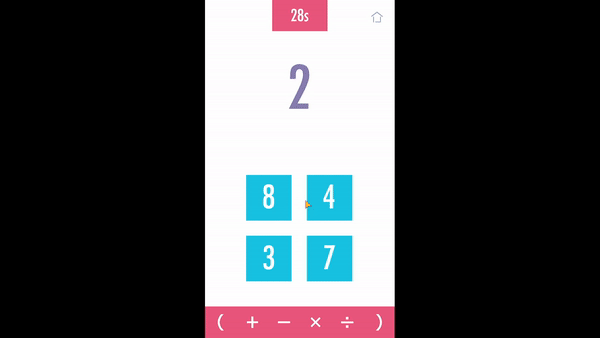New York Times' Digits - The Wordle of Math Games
Topic(s): Arithmetic, Order of Operations
Platform(s): Phone or PC
Developer: New York Times
Move over, Wordle! Thanks to the New York Times (NYT) and their new creation, Digits, I’ve read that sentence several times over the past few days. Digits is a mental math puzzle game that is currently in its beta phase. The game is available this week for a limited time. There are new puzzles released every day at midnight. Anyone can play the game for free so long as they have a device with a web browser.
General Math Content and Gameplay
Digits is easy for anyone to pick up and play. You are given a random target number, six positive whole numbers (there are no fractions or negative numbers in this game), and the four operations. The goal of the game is to use the operations and the six numbers you’re given to get as close to the target number as possible. There are rules to note:
You can only use each of the six numbers you’re given once.
You are not forced to use all six numbers to create the target number.
You can use any of the operations as many times as you want.
Reaching the target number rewards the maximum number of stars (3 stars), while being within 10 and 25 of the target number rewards the player with 2 stars and 1 star, respectively.
Difficulty and Design
There are tons of mental math games out there, but Digits closely resembles Fourte to me. The goal of Fourte is similar to Digits in that players must create the target number using the given set of numbers. However, Fourte’s rules make it a lot more challenging than Digits:
Players start with four numbers instead of six.
Parenthesis are included in addition to the four operations.
Players must use all of the four numbers to create the target number.
Players must create the target number. It’s not enough to come close.
Players create one expression instead of a series of them, so players are forced to be aware of the order of operations (PEMDAS).
You are allowed to “stick” numbers together (i.e., 9 and 1 to make 91).
Digits chooses to forego having players create one expression (and by doing so, the game ditches the order of operations) in favor of having players complete single operations in succession. This design choice makes the game a bit easier, more accessible, and less time consuming for everyone. The designers have mentioned wanting players to feel smart, rewarded, and like they have made a good use of their time. Therefore, this design choice aligns well with their vision.
However, for players wanting a higher level of challenge in Digits, perhaps the design team at NYT can consider the additional rules from Fourte. Further, they can also limit the three stars to players who are able to solve the puzzle in fewer computations. Many other math games do this with their feedback.
Summary
If you are looking for a new math game that is relaxed and casual, give Digits a try! I can see this game being popular with math teachers and their students. It is easy to play and has been receiving mostly positive feedback. I have been waiting until midnight each day to play the new puzzles. If you’re interested in reading more about the design of the game, check out this article from NYT. If you’d like to see more of the game before diving in, check out my solution for yesterday’s final puzzle below.
I would love to know your opinion and what you think of Digits! Please let me know in the comments!
Challenge
The difficulty in Digits increases as players progress through the puzzles, or if they aim for more stars.
Freedom
Digits is an open-ended game as players have multiple ways to create the target number.
Feedback
Digits provides feedback to players in the form of stars based on their performance.







